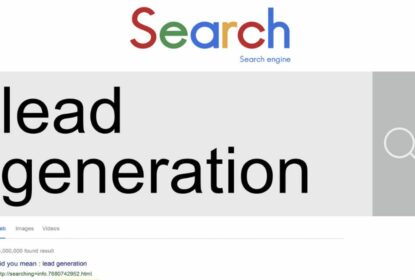The way people access and interact with the internet has drastically changed over the years. In the past, the only way you could surf the web was on a desktop computer. Now, there are a wealth of devices that allow you to access wireless networks and explore the internet in various ways. In fact, mobile accounts make up over half of all web traffic worldwide.
Countless businesses and web developers have made a concerted effort to improve the user experience for mobile users. With more users accessing the internet via mobile devices rather than on a desktop, optimizing your website for mobile should be a priority for all businesses, regardless of the industry.
To help businesses adjust to these changes and improve mobile experiences, Google has provided a solution in the form of Accelerated Mobile Pages (AMP). Many issues plague mobile users, which AMP looks to fix.
The way people access and interact with the internet is always changing. Thanks to the emergence of smartphones and smart devices, people are accessing the internet in new ways. Naturally, businesses have had to adjust their practices to keep up with user behaviors. ARYU Advertising always keeps a finger on the pulse, allowing us to adjust accordingly to the changes online to ensure our clients experience the most success possible.
What is Accelerated Mobile Pages?
One of the main issues that plague mobile users is speed. When Google launched its mobile-friendliness update and made it a search engine ranking factor, website owners were excited about faster and more enjoyable mobile experiences. All site owners should prioritize mobile optimization, yet many of them overlook the importance of page load speed.
Data from KISSmetrics shows that 47% of consumers expect webpages to load in two seconds or less. Furthermore, 40% will abandon a site if it takes longer than 3 seconds to load. By those numbers, if your site makes you $100,000 a day, then a one-second page delay could potentially lose you around $2.5 million in sales a year. As you can see, load speed is crucial.
With Accelerated Mobile Pages, Google (partnered with Twitter) aims to make mobile pages that load remarkably fast. According to Google, the AMP plugin can reduce download time between 15-85%.
Google describes AMP as an open-source HTML framework, which allows site owners to create mobile webpages with lightning-quick load times in an easy-to-understand way, all with user-experience in mind.
Main Components of AMP
AMP is essentially a stripped-down version of HTML. However, there are three main components of Accelerated Mobiles Pages that you should be aware of:
- AMP HTML: Essentially, AMP HTML is traditional HTML with custom AMP extensions that allow you to create more readable content and faster loading pages. The AMP plugin offers custom AMP tags and properties, as well as restrictions. However, if you have some familiarity with HTML, you should be able to adjust your existing pages to AMP HTML.
- AMP JavaScript (JS): It is crucial to note that third-party JavaScript is not allowed with the AMP plugin. However, there is an AMP JS library that site owners can access to ensures fast rendering for AMP HTML pages. The tool also manages resource handling, giving custom tags of AMP HTML. Additionally, it also handles asynchronous loading for everything coming from external sources to ensure no element is blocked from rendering.
- AMP Cache: AMP also provides an optional Content Delivery Network (CDN), which will cache all of your AMP-enabled pages and automatically make optimizations to improve performance. AMP Cache can also check and make sure your pages work as they should.
The AMP plugin is able to render your mobile pages much faster because it removes all the HTML code tag manager aspects that are not suitable for AMP. It leaves only those that are necessary. AMP removes these tag manager aspects because if they remained, load time would slow down significantly.
JavaScript is one aspect that would not be rendered for Accelerated Mobile Pages.
Takeaways
When using Accelerated Mobile Pages, you must use a simplified version of CSS to ensure fast load times. Additionally, as we mentioned above, you cannot use third-party JavaScript. You can access the JS library AMP provides, but you might experience lazy loading since you don’t have control over them. Your AMP-enabled pages must be validated to ensure they function every time.
For additional content, you must upload custom fonts, declare the correct height and weight of an image, and only use AMP-approved extensions if you want to insert videos on a page. The goal of AMP is to create a user experience that includes improved readability and fast speeds.
Benefits of Accelerated Mobile Pages
There are plenty of benefits when it comes to AMP, some of which include:
- Improves Load Speed: As we have mentioned, load speed is vital. Users expect webpages to load in a matter of seconds. Did you know that even a 100-millisecond delay in load time can decrease conversion rates by up to 7%? A two-second delay increases bounce rates by up to 103%. People expect things to load quickly, which is what AMP aims to do.
- Boosts Mobile SEO Ranking: The faster a webpage loads, the happier the user is. Happier users are more likely to return to a site, complete a purchase, subscribe to a service, or share a website. While Google has not directly made Accelerated Mobile Pages a ranking factor, it has implied AMP could be in the future. However, page load speed and mobile-friendliness ARE ranking factors, both of which AMP improves.
- Improves Ad Supports: One issue both desktop and mobile webpages share is the number of distractions on a page. Many distractions can affect your conversion rates by reducing load speed and readability. However, AMP can eliminate many of these distractions. AMP uses a simplified version of CSS, so it doesn’t execute all HTML code tags, and JavaScript is (mostly) nonexistent on webpages. The code is much lighter, and AMP will display ads in a more aesthetically pleasing and user-friendly way. They will still grab a reader’s attention without ruining the experience.
- Easier User Tracking: Knowing how a user got to your site and what they did on it are just as important as getting them to it. AMP offers tools that allow you to track user behavior and understand your site’s performance better. You can use tags to track clicks/conversions, link tracking, visitor counts, new and returning uses, and much more.
Conclusion
Google and Twitter came together to improve the user experience for mobile users. That included improving readability and load speed. With Accelerated Mobile Pages, they were able to do just that. With more and more users accessing the internet from mobile devices, it’s crucial to cater to these users.
Improving load speed and readability will not only reduce your bounce rates, but it will increase your conversion rates, as well, which will eventually lead to improved profits. ARYU Advertising understands the importance of optimizing your website for mobile, which includes utilizing Accelerated Mobile Pages. If you’re interested in improving the user experience on your site, give us a call today.










